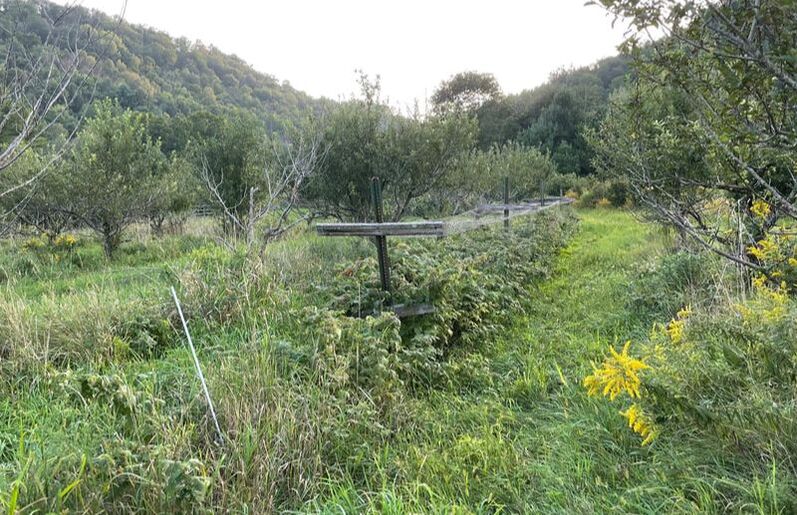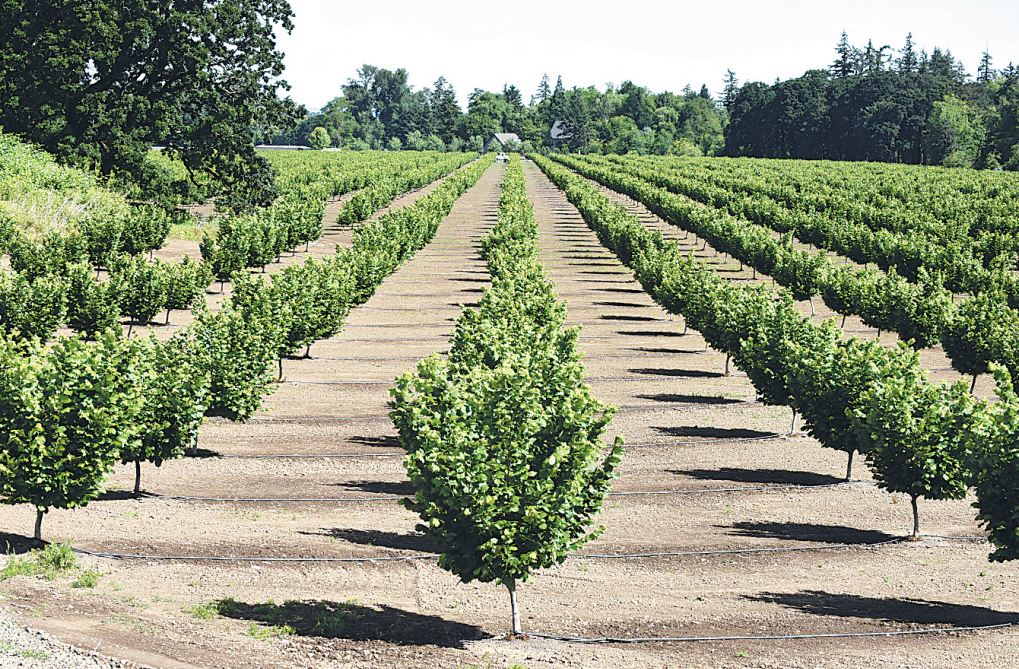What sets the Midwest hazelnut industry apart?
Most hazelnuts sold in the US today come from a European hazelnut variety grown in Oregon's Willamette Valley (see Where do hazelnuts grow?), but the burgeoning industry in the Midwest looks a lot different. So what sets us apart?
Genetics: The American Hazelnut (Corylus americana) is native to the oak savanna ecosystem that once covered swaths of the Upper Midwest. The crops on farms in the Midwest are crosses between this native nut and the European hazelnut, creating a version of the native plant with a larger nut size and more consistent yield. These hybrids maintain the characteristics of the native plant: winter heartiness, resistance to Eastern Filbert Blight, a rounded physical form, a husk that covers the full nut, drought resistance, and the ability to thrive without farmer added inputs like pesticides, herbicides, and even water.
Farms: Most Midwest hazelnut farms are diverse, growing hazelnuts alongside other perennials like berries and asparagus, or native plants like prairie grasses and oak trees. This diversity contrasts with the strict monocultures present around the world. Hazelnut farms in the Midwest are also quite a bit smaller than those worldwide, at only a few acres. While small farms have their advantages, we hope to see larger areas of land dedicated to hybrid hazelnuts as they become a more viable commercial crop.
Taste: You know how the small, wild strawberries are the sweetest? It's the same for hazelnuts! The flavor on our smaller, Midwest-grown nuts is slightly stronger and tastier than you might be used to with the bigger European hazelnuts. Plus the hazelnut skins on Midwest nuts are not bitter, so they are better for snacking and you can ignore any instruction to blanch your hazelnuts in all recipes. Try them for yourself and let us know what you think!
Harvest: The hazelnuts on small, Midwest plantings are largely harvested by hand. Farmers will run their arms along the flexible branches, and pluck off the hazelnut pods. A few growers use a machine called a straddle harvester, originally designed to pick blueberries. Straddle harvesters are shaped like an upside down U. They pass over the rows of bushes, running the stems through turnstiles that pull down and collect the nuts.
By contrast, the husks of the European hazels do not cover the full nut, so the nuts fall onto the ground and are harvested from there. A machine first shakes the trees vigorously to release the nuts, and then a strong fan blows the nuts into a single pile. This method presents ecological concerns because it requires using herbicide to clear the ground of any vegetation, which is why organic hazelnuts are exceedingly rare. The bare ground is ripe for erosion, and limits the water retention and carbon storage of the soil below.
Genetics: The American Hazelnut (Corylus americana) is native to the oak savanna ecosystem that once covered swaths of the Upper Midwest. The crops on farms in the Midwest are crosses between this native nut and the European hazelnut, creating a version of the native plant with a larger nut size and more consistent yield. These hybrids maintain the characteristics of the native plant: winter heartiness, resistance to Eastern Filbert Blight, a rounded physical form, a husk that covers the full nut, drought resistance, and the ability to thrive without farmer added inputs like pesticides, herbicides, and even water.
Farms: Most Midwest hazelnut farms are diverse, growing hazelnuts alongside other perennials like berries and asparagus, or native plants like prairie grasses and oak trees. This diversity contrasts with the strict monocultures present around the world. Hazelnut farms in the Midwest are also quite a bit smaller than those worldwide, at only a few acres. While small farms have their advantages, we hope to see larger areas of land dedicated to hybrid hazelnuts as they become a more viable commercial crop.
Taste: You know how the small, wild strawberries are the sweetest? It's the same for hazelnuts! The flavor on our smaller, Midwest-grown nuts is slightly stronger and tastier than you might be used to with the bigger European hazelnuts. Plus the hazelnut skins on Midwest nuts are not bitter, so they are better for snacking and you can ignore any instruction to blanch your hazelnuts in all recipes. Try them for yourself and let us know what you think!
Harvest: The hazelnuts on small, Midwest plantings are largely harvested by hand. Farmers will run their arms along the flexible branches, and pluck off the hazelnut pods. A few growers use a machine called a straddle harvester, originally designed to pick blueberries. Straddle harvesters are shaped like an upside down U. They pass over the rows of bushes, running the stems through turnstiles that pull down and collect the nuts.
By contrast, the husks of the European hazels do not cover the full nut, so the nuts fall onto the ground and are harvested from there. A machine first shakes the trees vigorously to release the nuts, and then a strong fan blows the nuts into a single pile. This method presents ecological concerns because it requires using herbicide to clear the ground of any vegetation, which is why organic hazelnuts are exceedingly rare. The bare ground is ripe for erosion, and limits the water retention and carbon storage of the soil below.
More questions for curious minds...
What is perennial agriculture?
Are other nuts processed on your equipment? (Allergen info)
How do I use hazelnut oil?
How do I use hazelnut flour?
How do hazelnuts grow?
What are your favorite hazelnut recipes?
What sets the Midwest hazelnut industry apart?
How do I join AHC as a grower?
Where can I buy hazelnuts?
Are hazelnuts healthy? (Nutrition facts)
Where do hazelnuts grow?
What is the history of AHC?
How can I see your really fun Instagram?
What is the best way to store my products?
Are your hazelnuts organic?
When will my order arrive?
Do you sell raw hazelnuts?
Are other nuts processed on your equipment? (Allergen info)
How do I use hazelnut oil?
How do I use hazelnut flour?
How do hazelnuts grow?
What are your favorite hazelnut recipes?
What sets the Midwest hazelnut industry apart?
How do I join AHC as a grower?
Where can I buy hazelnuts?
Are hazelnuts healthy? (Nutrition facts)
Where do hazelnuts grow?
What is the history of AHC?
How can I see your really fun Instagram?
What is the best way to store my products?
Are your hazelnuts organic?
When will my order arrive?
Do you sell raw hazelnuts?



